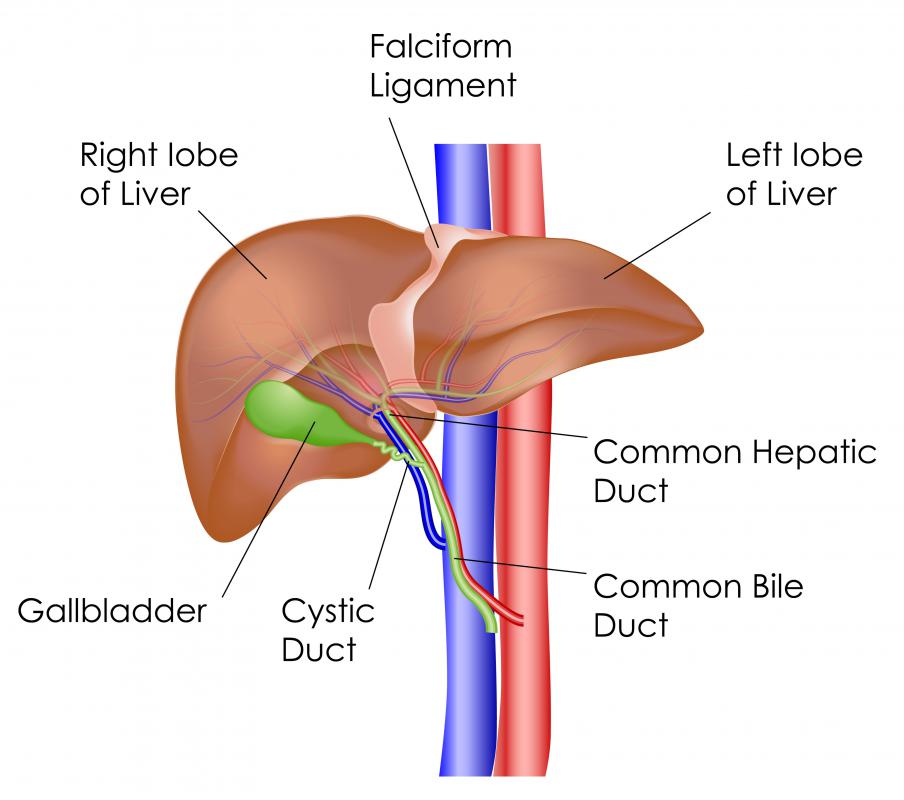At WiseGEEK, we're committed to delivering accurate, trustworthy information. Our expert-authored content is rigorously fact-checked and sourced from credible authorities. Discover how we uphold the highest standards in providing you with reliable knowledge.
What is a Laparoscope?
A laparoscope is a thin, flexible tube-like surgical tool which is inserted into the body and used to view the internal organs and perform minimally invasive surgery (MIS). This type of surgery is also referred to as keyhole surgery, band-aid surgery, or pinhole surgery, due to the nature of the laparoscope. It is inserted through a very small incision, usually in the abdomen, rather than the large incisions made by other surgical methods.
Often outfitted with a video camera, a laparoscope acts like a telescope to magnify the organs. Powerful lights are attached to illuminate them, and the results are sent to a television screen in the operating room. Special surgical tools are inserted through the laparoscope, and through small incisions that are made nearby its entrance to the body. Surgeons perform the procedure by monitoring their activity on the screen.

The most common operation performed with a laparoscope is the laparoscopic cholecystectomy, or the removal of the gallbladder. However, a laparoscope may also be employed in cases of endometriosis, polycystic ovaries, uterine growths, fallopian tube blockages, and abdominal adhesions. In some cases, a laparoscope is used in the initial stages of a colectomy, or removal of the colon, and a nephrectomy, or removal of the kidneys. It is almost always used for surgeries of the loins or abdomen.

There are other types of surgery that make use of the laparoscope. If the surgery is performed in a joint, it is known as an athroscopy. If it is performed in an existing orifice, such as the mouth or nose, it is known as an endoscopy. When used for abdominal surgery or surgery of the loins, it is known simply as a laparoscopy.
A laparoscopy has many advantages over traditional open abdominal surgery. There is a reduction in bleeding, less pain and recovery time due to the smaller incision, less time spent in the hospital after the surgery, and a faster return to normal activities. There is also a reduced risk of infection, due to the internal organs being less exposed to external contaminants.

For all its advantages, use of laparoscope for surgery also has risks. These are rare, but can include pelvic infection, the formation of scar tissue after surgery, and damage to the bowels or bladder. In very rare cases, damage to blood vessels or uncontrolled bleeding may occur, resulting in the need for a larger incision to stop the hemorrhaging.
AS FEATURED ON:
AS FEATURED ON:















Discussion Comments
@MrsWinslow - I think the danger with laparoscopic surgery comes from working in a smaller area. While that can mean a shorter recovery time, it also increases the chance of the surgeon making an accidental knick.
Also, apparently the initial insertion is done blindly, so while they know where to do this and it's almost always fine, there's the chance of hitting something on the way in.
I considered laparoscopic surgery once, but didn't go through with it - maybe someone who's been there can tell us more about it.
Why does laparoscopy increase the chance of damage to the bladder or bowel? You would think that working with a smaller incision would pretty much always be good.
Post your comments